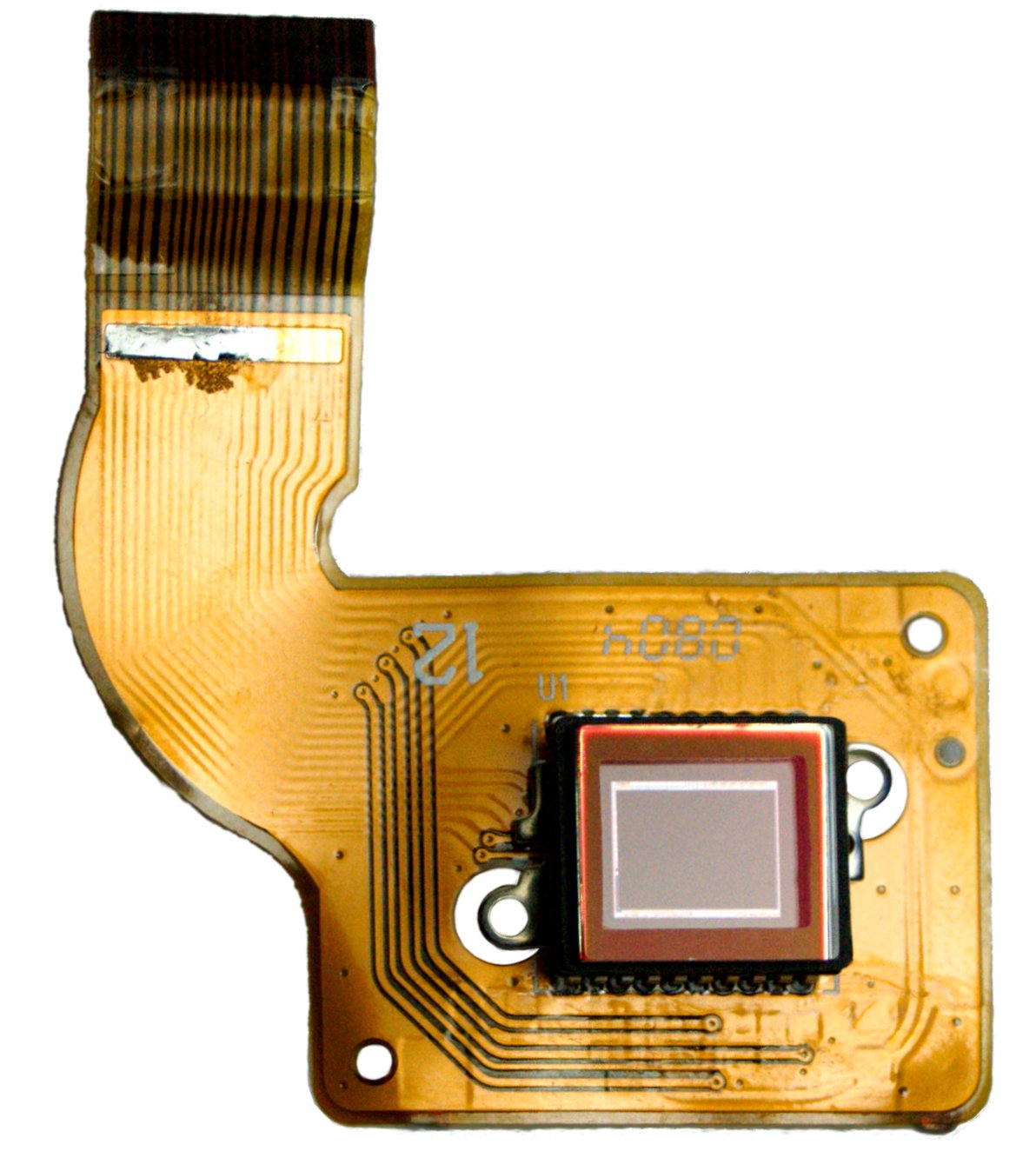|
Fill Factor (image Sensor)
The fill factor of an image sensor An image sensor or imager is a sensor that detects and conveys information used to make an image. It does so by converting the variable attenuation of light waves (as they pass through or reflect off objects) into signals, small bursts of c ... array is the ratio of a pixel's light sensitive area to its total area. For pixels without microlenses, the fill factor is the ratio of photodiode area to total pixel area, but the use of microlenses increases the ''effective fill factor'', often to nearly 100%, by converging light from the whole pixel area into the photodiode. Another case that reduces the fill factor of an image is to add additional memory beside each pixel, so as to achieve a global shutter on CMOS sensors. References Image sensors {{tech-stub ... [...More Info...] [...Related Items...] OR: [Wikipedia] [Google] [Baidu] |
Image Sensor
An image sensor or imager is a sensor that detects and conveys information used to make an image. It does so by converting the variable attenuation of light waves (as they pass through or reflect off objects) into signals, small bursts of current that convey the information. The waves can be light or other electromagnetic radiation. Image sensors are used in electronic imaging devices of both analog and digital types, which include digital cameras, camera modules, camera phones, optical mouse devices, medical imaging equipment, night vision equipment such as thermal imaging devices, radar, sonar, and others. As technology changes, electronic and digital imaging tends to replace chemical and analog imaging. The two main types of electronic image sensors are the charge-coupled device (CCD) and the active-pixel sensor ( CMOS sensor). Both CCD and CMOS sensors are based on metal–oxide–semiconductor (MOS) technology, with CCDs based on MOS capacitors and CMOS sensors ba ... [...More Info...] [...Related Items...] OR: [Wikipedia] [Google] [Baidu] |
Microlens
A microlens is a small lens, generally with a diameter less than a millimetre (mm) and often as small as 10 micrometres (µm). The small sizes of the lenses means that a simple design can give good optical quality but sometimes unwanted effects arise due to optical diffraction at the small features. A typical microlens may be a single element with one plane surface and one spherical convex surface to refract the light. Because micro-lenses are so small, the substrate that supports them is usually thicker than the lens and this has to be taken into account in the design. More sophisticated lenses may use aspherical surfaces and others may use several layers of optical material to achieve their design performance. A different type of microlens has two flat and parallel surfaces and the focusing action is obtained by a variation of refractive index across the lens. These are known as gradient-index (GRIN) lenses. Some micro-lenses achieve their focusing action by both a variati ... [...More Info...] [...Related Items...] OR: [Wikipedia] [Google] [Baidu] |
Photodiode
A photodiode is a light-sensitive semiconductor diode. It produces current when it absorbs photons. The package of a photodiode allows light (or infrared or ultraviolet radiation, or X-rays) to reach the sensitive part of the device. The package may include lenses or optical filters. Devices designed for use specially as a photodiode use a PIN junction rather than a p–n junction, to increase the speed of response. Photodiodes usually have a slower response time as their surface area increases. A photodiode is designed to operate in reverse bias. A solar cell used to generate electric solar power is a large area photodiode. Photodiodes are used in scientific and industrial instruments to measure light intensity, either for its own sake or as a measure of some other property (density of smoke, for example). A photodiode can be used as the receiver of data encoded on an infrared beam, as in household remote controls. Photodiodes can be used to form an optocoupler, allowing ... [...More Info...] [...Related Items...] OR: [Wikipedia] [Google] [Baidu] |



